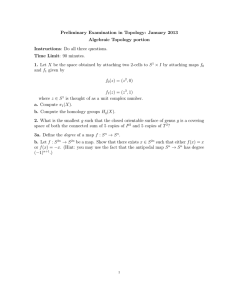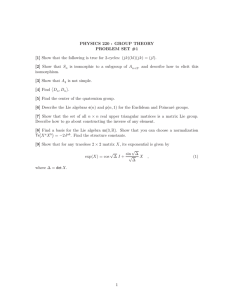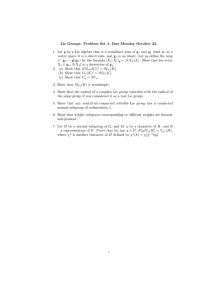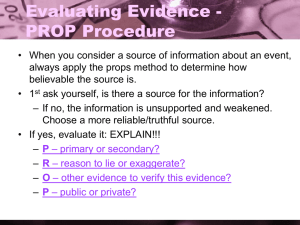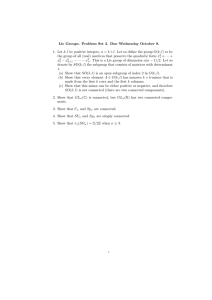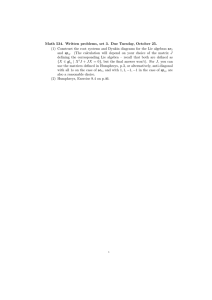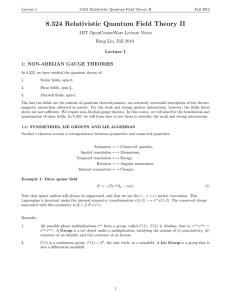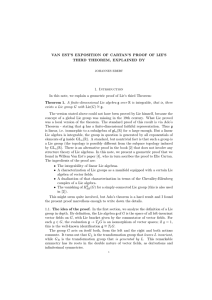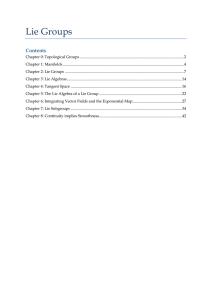DEPARTMENT OF MATHEMATICS
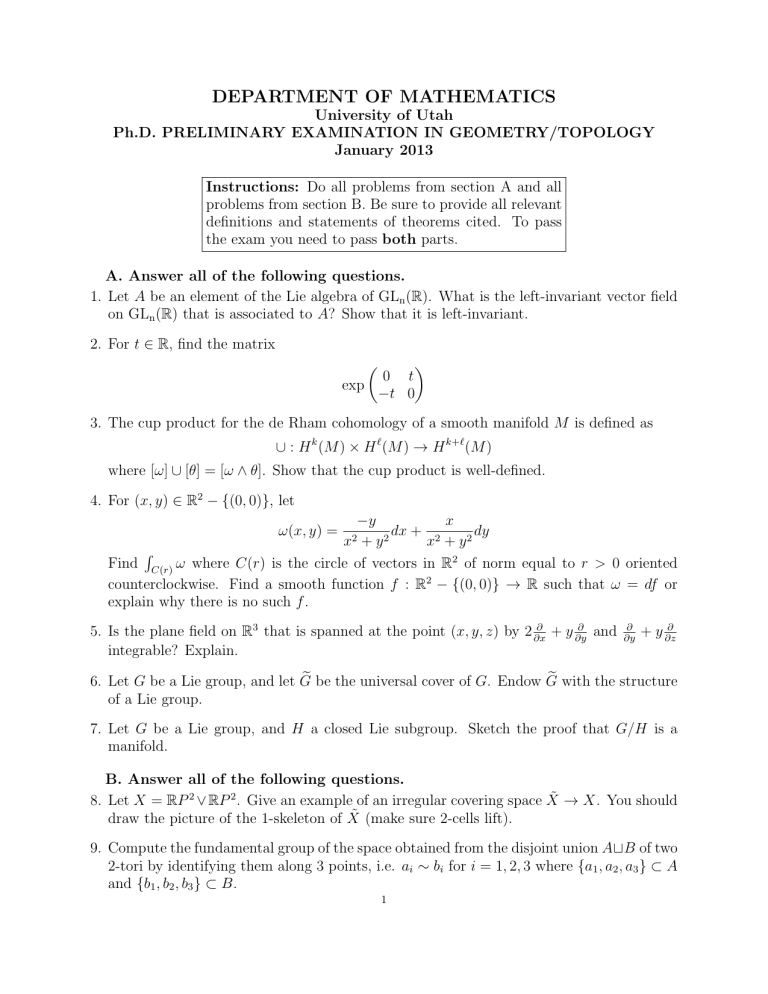
DEPARTMENT OF MATHEMATICS
University of Utah
Ph.D. PRELIMINARY EXAMINATION IN GEOMETRY/TOPOLOGY
January 2013
Instructions: Do all problems from section A and all problems from section B. Be sure to provide all relevant definitions and statements of theorems cited. To pass the exam you need to pass both parts.
A. Answer all of the following questions.
1. Let A be an element of the Lie algebra of GL n
( R ). What is the left-invariant vector field on GL n
( R ) that is associated to A ? Show that it is left-invariant.
2. For t ∈ R , find the matrix exp
0 t
− t 0
3. The cup product for the de Rham cohomology of a smooth manifold M is defined as
∪ : H k
( M ) × H ℓ
( M ) → H k + ℓ
( M ) where [ ω ] ∪ [ θ ] = [ ω ∧ θ ]. Show that the cup product is well-defined.
4. For ( x, y ) ∈ R
2 − { (0 , 0) } , let
Find
R
C ( r )
ω where C ( r
ω ( x, y ) = x 2
− y
+ y 2 dx +
) is the circle of vectors in counterclockwise. Find a smooth function f : R
2 x 2 x
+
R
2
− { y 2 dy of norm equal to
(0 , 0) } → R r > such that
0 oriented
ω = df or explain why there is no such f .
5. Is the plane field on R 3 integrable? Explain.
that is spanned at the point ( x, y, z ) by 2
∂
∂x
+ y
∂
∂y and
∂
∂y
+ y
∂
∂z
6. Let G be a Lie group, and let e be the universal cover of G . Endow G with the structure of a Lie group.
7. Let G be a Lie group, and H a closed Lie subgroup. Sketch the proof that G/H is a manifold.
B. Answer all of the following questions.
8. Let X = R P 2 ∨ R P 2 . Give an example of an irregular covering space ˜ → X . You should draw the picture of the 1-skeleton of ˜ (make sure 2-cells lift).
9. Compute the fundamental group of the space obtained from the disjoint union A ⊔ B of two
2-tori by identifying them along 3 points, i.e.
a i
∼ b i for i = 1 , 2 , 3 where { a
1
, a
2
, a
3
} ⊂ A and { b
1
, b
2
, b
3
} ⊂ B .
1
10. Let M be a closed connected orientable 3-manifold with H
1
H i
( M ; Z ) and H i ( M ; Z ) for all i .
( M ; Z ) = Z ⊕ Z / 2 Z . Compute
11. Let S g be the closed connected oriented surface of genus
(a) Prove that for g < h every map S g
→ S h g has degree 0.
.
(b) Prove or disprove: for g < h every map S g
→ S h is nullhomotopic?
12. Let X = S 1 × [0 , 1] and ∂X = S 1 × { 0 , 1 } . Compute H i
( X, ∂X ; Z ) for all i .
13. (a) The complex projective space C P n can be obtained from C P n
−
1 by attaching a single
2 n -cell. Describe the attaching map.
(b) What is H k ( C P n ; Z )? Give a proof by induction on n using (a). State any theorems you are using.
(c) What is the ring structure on H ∗ ( C P n ; Z )? Give an inductive proof. You may use
Poincar´e duality.
14. Carefully state the van Kampen theorem.
2
